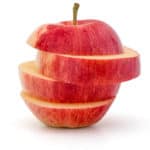Expert Food Tips for Chronic Hepatitis C: Part 1
Although many are convinced of the importance of food in both causing and relieving health problems, a substantial percentage of physicians fail to utilize nutrition for guiding their patients back to wellness. This is unfortunate, especially when their patients have chronic ailments like Hepatitis C. Regardless of the involvement of their doctor or their stage of liver disease, the food eaten by people with Hepatitis C can either make their bodies feel better or worse.
Our fixit fast culture has developed a higher level of comfort with drugs rather than foods; thus food as medicine has been largely neglected. Circa 400 B.C., the father of modern medicine, Hippocrates, said: “Let your food be your medicine and your medicine, your food.” In the eighteenth century, one of the greatest gastronomes of the world, Jean Anthelme Brillat-Savarin proclaimed: “Tell me what you eat, and I will tell you what you are.” Still popular today, Brillat-Savarin’s The Physiology of Taste is a treatise on the relation between man’s joy and survival with his ability to know and experience the pleasures of taste.
In lieu of continually being advised to avoid foods that assault the liver, many with chronic Hepatitis C are left wondering what they should eat. For a clear understanding of six ideal foods for the liver, the following tips are given:
- Drink Whey Protein – Add whey protein when making a smoothie because it contains lactoferrin and builds glutathione levels. While glutathione is the main antioxidant found inside liver cells, lactoferrin stimulates the immune system and has a direct antiviral property that hampers the Hepatitis C virus from attacking liver cells.
- Cook Mung Beans – Used by practitioners of Traditional Chinese Medicine to detoxify poisons in the body, mung beans contain a natural protease inhibitor. High in Vitamin B and C, potassium, magnesium, iron, phosphorous, copper, fiber and protein, mung beans’ ability to help a Hepatitis C-laden liver flush out toxins are worth the effort to find and prepare.
- Eat Shitake – Shitake Mushrooms contain lentinan, a beta-glucan with powerful effects on hepatitis and many other diseases, including cancer. According to the Sloan Kettering Cancer Center, lentinan is used for cancer, high cholesterol, strengthening the immune system and treating infections. These specialty mushrooms also raise white blood cell counts and increase helper t-cells.
- Love Artichokes – A member of the milk thistle family that helps control blood sugar levels, artichokes are known to support liver health. This fibrous, green veggie contains cynarin, which promotes the flow of bile from the liver to the gallbladder. This is very important because if the bile is not transported adequately to the gallbladder, the liver has an increased risk of being damaged.
- Munch on Dandelion Greens – By stimulating the flow of bile, dandelion helps both the liver and gallbladder break down fat, prevent gallstones and aid in detoxification. In addition, dandelion greens have mild diuretic properties, which may help relieve ascites, a common consequence of liver cirrhosis.
- Pick Foods Rich in Selenium – Because Hepatitis C encodes selenoproteins, the virus depletes cells of selenium. Thus, those with Hepatitis C need more selenium than the average person. Researchers hypothesize that when cells are drained of selenium, the Hepatitis C virus will spread from cell to cell looking for more. Thus, supply as much selenium to your cells as possible with the following selenium-rich foods: brazil nuts, broccoli, onions, leeks and garlic.
Using food to guide our health is not a new concept. While awareness of how unhealthy food can damage our bodies has recently grown, much of our medication-oriented society has forgotten about food’s therapeutic potential. Luckily, you needn’t be a certified nutritionist to know what choices to make in the grocery store. By including whey protein, mung beans, shitake mushrooms, artichokes, dandelion greens and selenium-rich foods into your diet, you can help your body feel well despite being infected with Hepatitis C.
References:
http://ayurwhat.blogspot.com/2007/11/mung-beans.html, Mung Beans, Julia Australia, Retrieved January 17, 2009, Ayurwhat?, 2009.
http://www.alchemistlab.com/newsletter11.htm, Top Ten Foods For Treating Chronic Hepatitis, Steven Finkbine, L.Ac., Retrieved January 16, 2009, Alchemist Lab Newsletter # 11, Alchemist Lab, LLC, September 2008.
http://www.allabouthepatitisc.com/readytolearn/living/slowing/eating_
healthy.jsp, Eating Healthy, Schering Corporation, 2009.
http://www.atihealthnet.com/pages/diethiv.html, Diet and Hepatitis C, Retrieved January 16, 2009, AIE Pharmaceuticals, 2009.
http://www.bmj.com/cgi/content/full/328/7433/0-g, “Let Food Be Thy Medicine…”, Richard Smith, Retrieved January 16, 2009, British Medical Journal, January 2004.
http://www.dietblog.com/archives/2007/05/02/10_reasons_to_choose_
food_as_medicine.php, 10 Reasons to Choose Food as Medicine, J. Foster, Retrieved January 16, 2009, Diet-Blog, 2009.
http://www.kitchenproject.com/history/Brillat_Savarin.htm, The Gastronomic Servings of Brillat-Savarin, Amanda Watson Schnetzer, Retrieved January 16, 2009, The Washington Times, July 1999.
http://wwwhealthfreedomcoachcom.blogspot.com/2008/03/dandelion-herbal
-liver-cleanse-better.html, Dandelion: Herbal Liver Cleanse, Better Digestion, and More!, Ellen Landauer, Retrieved January 17, 2009, Health Freedom Coaching, 2009.
http://www.hepccouncilsa.asn.au/factsheets/lifestyle/herbs/theraputicherbs.html, Herbs – Therapeutic and Toxic, Retrieved January 17, 2009, Hepatitis C Council of SA, 2009.







